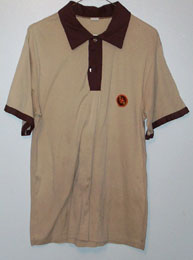
 Varsity
Scouts (1984-present)
Varsity
Scouts (1984-present)
Overview
In 1984, National created a new program for older boys called Varsity
Scouts. Varsity Scouts would be for boys 14-17 who would be
organized
into Varsity Scout Teams. Many in scouting have be confused by
this
program with its use of sports terminology, leading many to think it
nothing
more then sports oriented form of scouting. This lack of clear
purpose
in the minds of many scouters has limited this program. It is
also
unclear whether the program is intended as a progression level for
boys,
with them being in Boy Scout Troops from 11 through 13, then joining a
Varsity Scout Team at 14 and later joining an Explorer Post (now
Venturing
Crew). Or is the program meant to attract boys who for whatever
reason
had never been Boy Scouts? Or is it both?
Some additional information may be found at the BSA web site's Varsity Scout page.
NEW
in Varsity Scouts:
We are seeing a revitalization of Varsity Scouts. A new edition
of the Varsity Scout Guidebook (#34827A) has been released in
the
first part of 2001. The 3 volume set of Varsity Team Program
Features
(#34837, 34838, 34839) booklets has also been released. These
replace
the old Game Plan booklets and Venture/Varsity activity booklets.
A new Varsity Scout award, the Denali Award, has also been
created.
See below for more on this new award. It appears from the new
Varsity
Scout Guidebook that Varsity Scout Huddles are now called Roundtables.
Operation On-Target, the National Varsity Scouting event (see below for more info) was held in July in 2003. Plan now for 2004. Check out the On-Target website here.
Varsity Scouts: The
Experimental
Years
Before Varsity Scouts became an official program in 1984, it went
through
almost 10 years of experimentation. During this time, the program
was limited to boys 14 & 15.
The programs started off in Area 2 of the Western Region. Alva Greene, the Area President, noticed a drop in enrollment of 14-15 year olds in 1974. He then tasked a commitee to look into this. From 1975-77, this committee worked on adapting the basic scouting program to the needs and interests of the 14- and 15-year old. Out of this the full Varsity Scout program was developed.
Next was the first experimental phase, or "pre-pilot" phase in 1978 and 1979, again limited to the 9 councils in Area 2 of the Western Region. During this phase, the first handbooks were published, and the first uniforms and other insignia were produced . A primitive version of the Varsity Scout Letter was also produced.
Then in the second experimental phase or National pilot phase, in 1980, its use was expanded to 28 councils around the country, most likely to make sure of its broader use. Slightly revised versions of the guidebooks were produced, as well as a slightly different uniform shirt. A new Varsity Scout Letter was produced, and apparently silk-screened office patches as well.
The idea behind this work was to create a more challenging scouting program that would appeal to older boys, much like the older Explorer Scout program of the 40s did. The use of sports team terminology was to make the program more appealing to older boys would had never been involved in scouting, and might not be interested in joining a program with younger boys. During this experimental period, the members were not allowed to wear the BSA field uniform, instead wearing their own uniform consisting of a beige collared sports shirts with dark brown shorts or slacks. Also, manuals from this period indicate that the program was only for boys 14-15, and when they turned 16 they were to join an Explorer Post. This period of the program is not well known. If anyone has more info about literature, insignia and the like from this period, it would be appreciated.

Varsity Scout Program
The Varsity Scout program is much like the Boy Scout program.
However, it has five fields of emphasis: Advancement, High
Adventure/Sports,
Personal Development, Service, and Special Programs/Events. Each
team has a youth member called a program manager in charge of
each
area. While not explicitly sports oriented, Varsity Scout Teams
can
and do participate in sporting events, but they don't have to be.
While the program is basically similar to Boy Scout troops, its focus on more advanced programming in the areas of outdoors and sports would lead to them using some additional literature from the Boy Scout program. As Varsity Scouts would earn the same advancement awards as Boy Scouts, they would use those same materials. However, in some areas they would be separate. For instance, instead of the adult leaders participating in Boy Scout leader Roundtables, they would participate in Varsity Scout Huddles, so that they can focus on the more unique features of the Varsity Scout program. Varsity Scout Leaders have a separate training program then Boy Scout Leaders. There were also a few Varsity Scout Wood Badge courses.
Varsity Scout Pledge
(in use from 1977 to 1989?, brought back in 2001)
As a Varsity Scout I, will:
Live by the Scout Oath (Promise), Law, motto, and slogan;
Honor the dignity and worth of all persons; Promote the cause of
freedom;
and
Do my best to be a good team member.
Varsity Scout Uniform
During the Experimental years of the program, Varsity Scouts were not
allowed to wear the BSA field uniform, instead wearing their own
uniform
consisting of a beige collared sports shirt with dark brown shorts or
slacks.
See above for a picture of the shirt.
Today, Varsity Scouts wear the same tan BSA field uniform, but they wear orange shoulder loops and have their own office insignia. They got their own colored backing for service stars: brown (orange is for Tiger Cubs). Instead of the red Boy Scout jacket, they wear an orange jacket, which was available in both nylan and polin. It appeared that this had been dropped from the 2000 BSA catalog, but the 2001 restored it, so perhaps the photo was an error. A Varsity Scout hat was also available for awhile. In 1989, with the introduction of the Boy Scout activity uniform and shorts, a tan polo shirt with a red fleur-de-lis and the word "Varsity" was introduced. In 1995, Varsity Scouts would gain the use of wearing the "Varsity" shirt strip on their uniform which had previously been used only for the in-troop Varsity program.




Varsity Scout Advancement
Program
For the most part, Varsity Scouts use the same advancement program
of Tenderfoot, Second Class, First Class, Star, Life, and Eagle Scout
as
Boy Scouts. However, they have the addition of the Varsity Scout
Letter, which is similar to the Varsity letters in school. This
letter
could be earned by both Varsity Scouts and Varsity Scout Leaders with specific
requirements for each, and could be earned more then once. Up
to three bars are added below to indicate additional letters
earned.
This letter is worn on the orange jacket, and a pin for their Boy Scout
advancement could be worn on the lower part of it. There are
atleast
2 version of the letter and bars. A more primitive version of
them
was produced for the experimental program, the later official period
had
nice looking insignia. Later on, the embroidered bars were
dropped,
to be replaced by a metal bar, which was itself dropped. In 2001,
the metal bar has been brought back.
In 1989, with the addition of the Venture/Varsity program in Boy
Scout
Troops, the letter was redesigned into the Venture/Varsity Letter, and
a variety of activity pins were added. These pins were for
various
sports and high adventure activities. The letter and pins could
be
earned by Varsity Scouts and members of Venture/Varsity programs in
troops.
The smaller letter could be worn on the bottom of the merit badge sash
or on the right breast of a jacket. The requirements for the
Venture/Varsity
Letter were simplified. Now the letter (and pins) would be earned
over a period of time to accomplish an ultimate adventure or season of
sports, usually three months, along with active participation at
meetings.
 |
In 2001, a new award, the Denali Award, has been created for Varsity Scouts. More information is in the new Varsity Scout Guidebook. These are the requirements. The requirements are very similiar to the original Varsity Scout Letter requirements. The award itself is a medal. The name comes from the native Eskimo word for Mount McKinley. At 20,320 feet, McKinley is North America's highest mountain and the crown of the 600-mile-long Alaska Range. The indigenous Athabascan people dubbed the massif "Denali", or the "Great One.". From base to summit, the mountain's vertical relief is greater than that of Mount Everest. McKinley is located within Denali National Park, a park larger than the state of Massachusetts, at over 6 million acres. Yes, this is a bad scan of the medal. The scan is from a brochure on the new stuff in Varsity Scouting. Hopefully I can get a better one soon. As far as I know, there are no plans to create a knot for this award. |
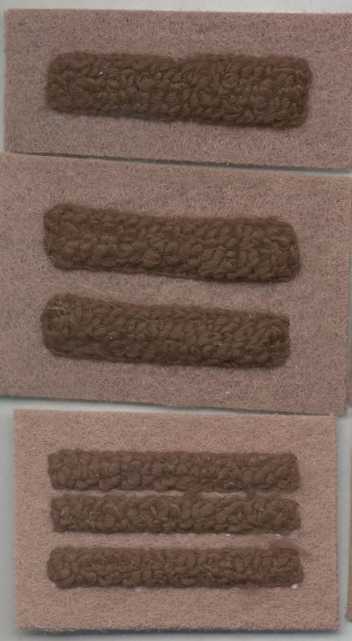 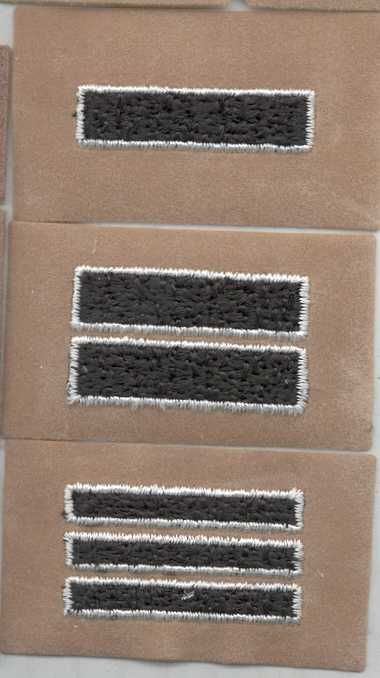 |
  |
| Backpacking |  Basketball Basketball |
Bowling | Canoe Camping |
| Caving | cross-country Skiing | Cycling | Discovering Adventure |
| Fishing | Freestyle Biking | Frontiersman | Mechanics |
| Orienteering | Rock Climbing & Rappelling | Roller Hockey | Shooting Sports |
 Snow
Camping Snow
Camping |
Soccer | Softball | Survival |
| Swimming | Tennis | Triathlon | Volleyball |
| Waterskiing | Whitewater Canoeing |
Varsity Scout Unit
Organization
Varsity Scout units are called Teams. They are basically
organized
like Boy Scout Troops, but with different terms for several
offices.
A unique office in Varsity Scouts is the program manager, which
is a youth officer in charge of one of the five Varsity Scout program
areas.
Office patches were redesigned in 1989 along with the redesign of Boy Scout office patches.
In addition to these patches shown, apparently during the second experimental stage of the program in the early 80s, there were silk screened patches produced. This is a little strange, as during this period, the Teams could not wear BSA uniforms. Were there exceptions to this rule? And where were they to be worn?
For collectors, I have also included the Varsity Scout Huddle office
patches. A VS Huddle is the equivalent of the Boy Scout
Roundtable.
They have changed them over the years.
| Boy Scout | Varsity Scout |
| Troop | Team |
| Scoutmaster | Coach |
| Senior Patrol Leader | Captain |
| Patrol | Squad |
| Patrol Leader | Squad Leader |
| Minimum age- 11 | Minimum age- 14 |
| Red shoulder loops | Orange shoulder loops |
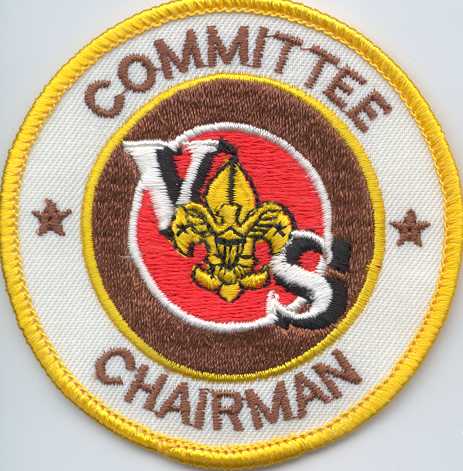 |
 |
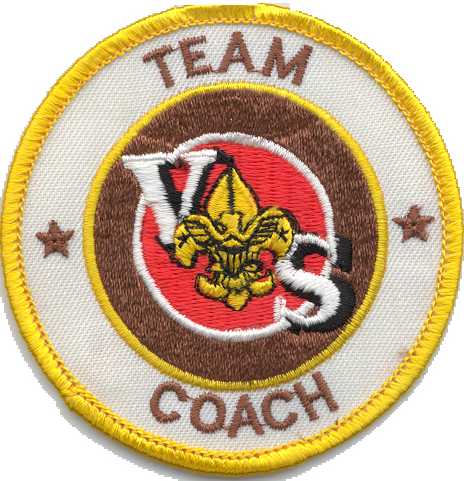 |
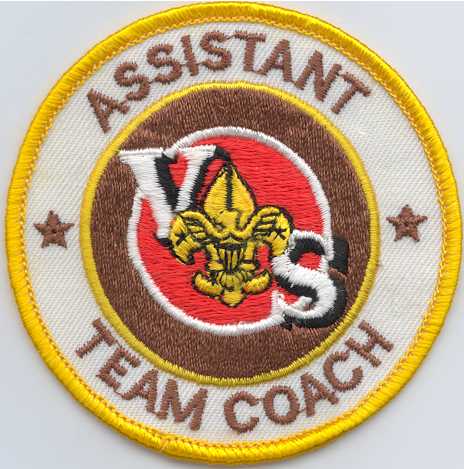 |
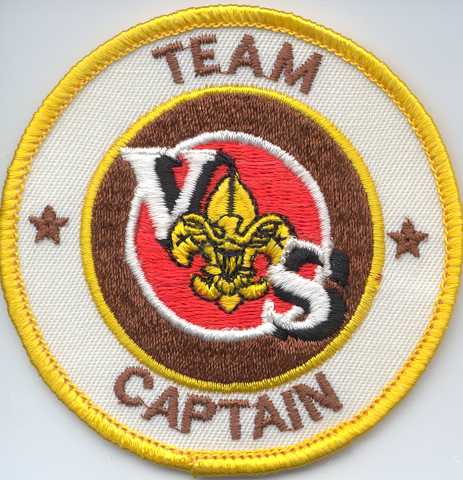 |
 |
 |
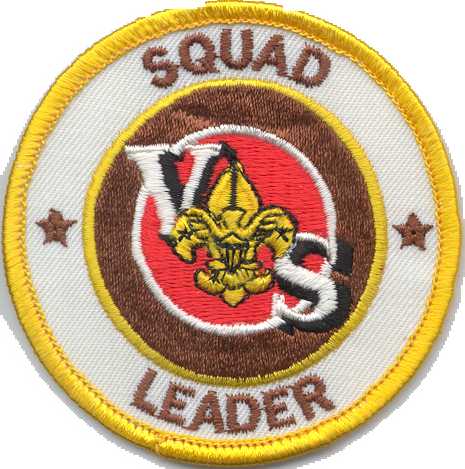 |
 |
 |
 |
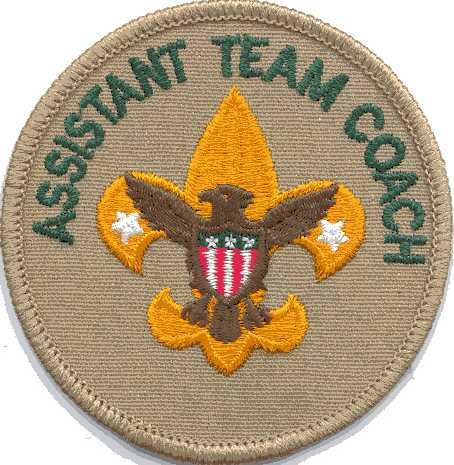 |
 |
 |
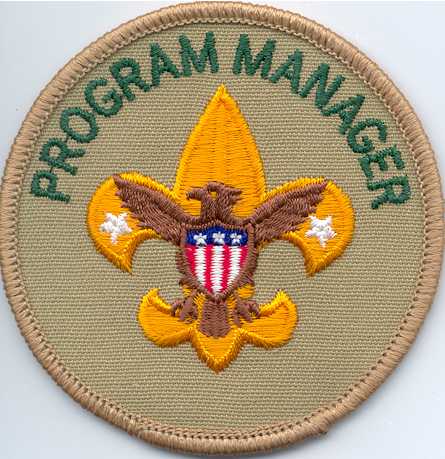 |
Squad Leader, NO PICTURE |
![Varsity Huddle Commissioner (1986-89; 1995-present), VS-45 [VHC2]](pics/VS45.gif) |
![Varsity Huddle Staff, (1986-89; 1997-present), VS-47, [VHS1]](pics/VS47.gif) |
|
| VS-46 Varsity Huddle Commissioner, tan twill with tenderfoot (1989-95) [VHC1] | ![Varsity Huddle Staff, (1989-95), VS-48, [VHS2]](pics/VS48.jpg) |
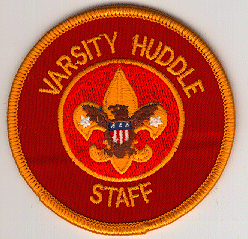 |
Miscellaneous
During the experimental years of 1980-84, a patch stating "Trained
for Leadership" was produced. Does anyone have any documentation
on what this patch was for and how long it was used?

Operation On-Target
The closest to a National Varsity Scout event is Operation On-Target,
held on the third weekend in July. This event has been run every
year since the mid-1980s. Its goal is to have Varsity Scout Teams
from across the country climb mountain peaks (or buildings), and from
there
use mirrors to signal each other. They will also talk to each other
with
ham radios or cell phones, creating a link between them and other teams
that are participating. Part of this is to set records of
long-distance
signaling by linking up from Border to Border, and from the Pacific to
Denver. There is a website devoted to this program at http://www.ontargetbsa.org/index.html.
The Great Salt Lake Council published an activity booklet on this, and
this has been included in the new Varsity Team Program Features
Book,
v2.
Literature
There were two basic manuals for Varsity Scouting: the Varsity
Scout
Handbook and the Varsity Scout Leader Guidebook.
The Varsity Scout Handbook went through at least 2 editions. The first was used during the experimental phases, and went through about 3 or 4 printings. The second edition was introduced when the program went official. Am aware of at least two printings. At some point, I believe in around 1989/90, the handbook was dropped, and Varsity Scouts would just use the Boy Scout Handbook starting with the tenth edition in 1990.
The Varsity Scout Leader Guidebook should be thought of as a supplement to the Scoutmaster's Handbook, as it is in no way its equal. It is heavy on Varsity Scouting specific information, but has nothing on basic scoutcraft/scouting information. Am aware of four editions. The two were was used during the experimental phase and was called the Varsity Scouting Leader's Guidebook, and during the official program phase has gone through apparently two further editions.
A revised Varsity Scout Leader Guidebook has been released, now called the Varsity Scout Guidebook. It is aimed at both Varsity Scouts and their leaders. It also has the requirements for the new Denali Award.
For each of the 26 activity pins there was a pamphlet for it, similar to the merit badge pamphlets. These were allowed to drop out of print in 1999 and 2000, and have been replaced by the new Varsity Team Program Features booklets..
Other literature includes the Varsity Scout Game Plan, three pamphlets that have program features that complement the activity pamphlets. These also have been dropped in favor of the new, three volume Varsity Team Program Features series.
Varsity Scout Huddles would get their own literature, the same as Boy Scout Roundtables.
For most other literature, Varsity Scout Teams share the same items
with Boy Scout Troops.
| Varsity Scout Handbook
1st Edition (Experimental program phase) 1st 1978, Jan #7810 10000 158pg 2nd 1979 3rd 1980, June #7825 158pg (Experimental program phase II) 2nd Edition (Official program phase) 1st 1984 #7825A 160pg 2nd 1985 #7825A |
 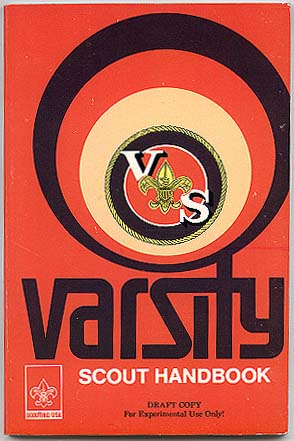 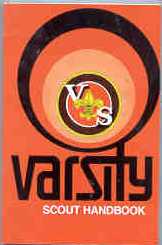 |
| Varsity Scout Leader Guidebook
1st Edition (Experimental program phase I) 1st 1978, Jan #7811 5000 2nd Edition (Experimental program phase II) 1st 1980 #7826 257pg 3nd Edition (Official program phase) 1st 1984 #7826A 254pg 2nd 1985 4rd Edition 1st 1991 #34826 182pg 2nd 1996 #34827 180pg 3rd 1997 #34827 |
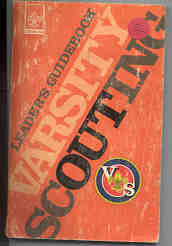  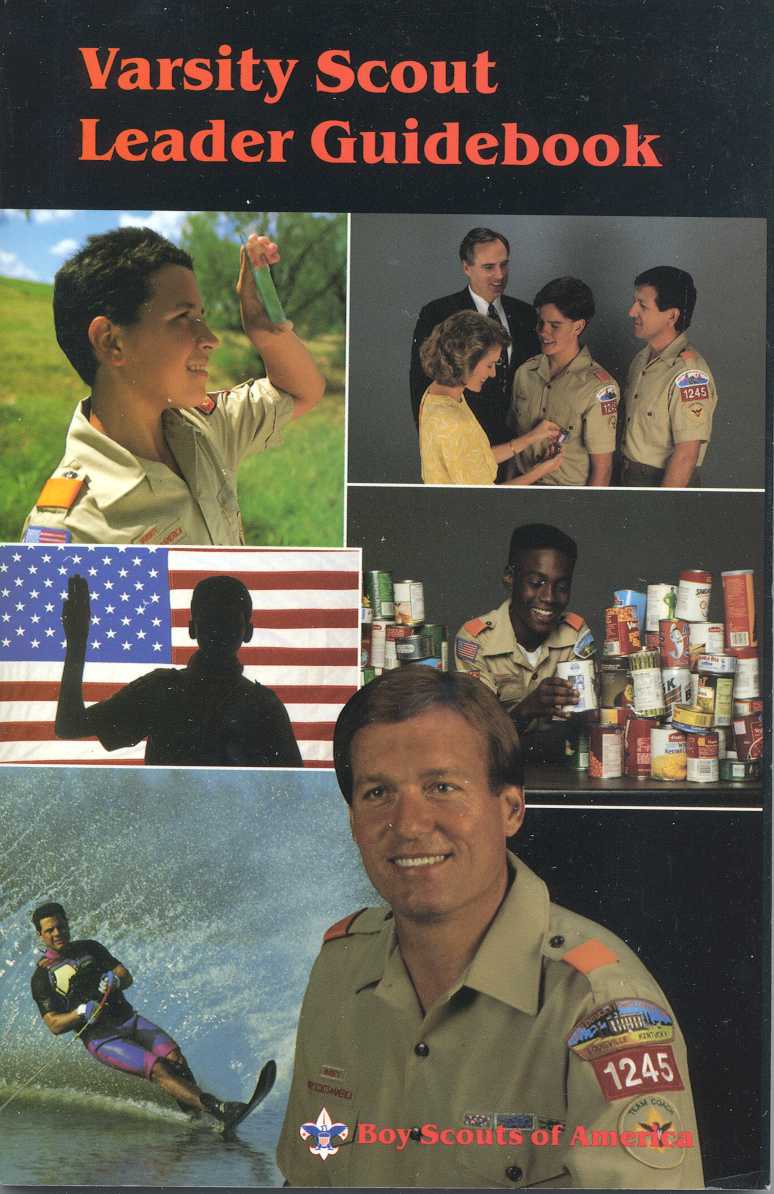 |
| Varsity Scout Guidebook (#34827A)
1st edition 2000 137pg loose-leaf |
 |
| 26 activity pamphlets
Basketball, #3450; Bowling, #3467; Cross-Country Skiing, #33463; Roller Hockey, #33462; Shooting Sports, #3457; Soccer, #3453; Softball, #3452; Swimming, #3473; Tennis, #3455; Triathlon, #3456; Volleyball, #3451; Water skiing, #3478; Backpacking, #33484; Canoe-Camping, #33468; Caving, #33446; Cycling, #3437; Discovering Adventure, #33472; Fishing, #3438; Freestyle Biking, #3447; Frontiersman, #33448; Mechanics, #3449; Orienteering, #33439; Rock Climbing, #33469; Snow Camping, #3440; Survival, #3441/#33483; Whitewater, #3465. Operation "On-Targer", published by Great Salt Lake Council, BSA. |
NO PICTURES |
| Varsity Scout Program Notebooks
1984 (shown) 1985 (shown) 1986 (shown) 1987 1988 other exist?? paperback |
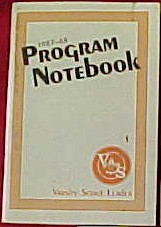   |
| Varsity Scout Game Plan
V1 #34849/#7849 19??/1998 54pg V2 #33433 /#3433 V3 #33505/#3505 1991/?? 34pg pamphlets |
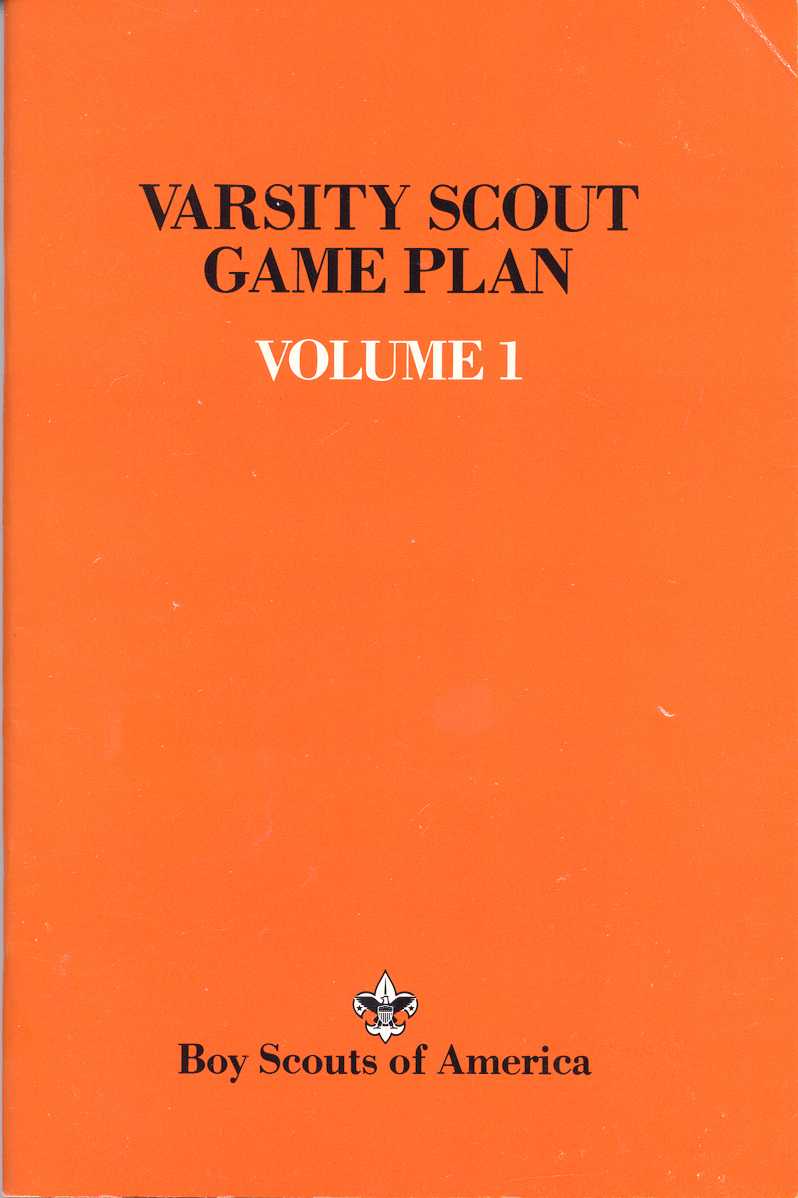   |
| Varsity Scout Program Features
V1 #34837 2001, 177pg V2 #34838 2001, 214pg V3 #34839 2001, 167pg loose-leaf |
 |
| Varsity Scout Leader Huddle
Planning Guide #7829/#34829 c1989 Supplement I #35503 c1990 Supplement II #33459/#3504 c1991 loose-leaf |
NO PICTURES |
Updated: 11/26/2003mrb